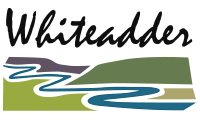Robert Burns, Scotland’s national bard, is said to have visited the Scottish Borders in the spring of 1787. His good friend Robert Ainslie lived at Berrywell and travelled with him. Ainslie, and the town of Duns both feature in Burns’s song ‘Robin Shure in Hairst’.
‘Robin shure in hairst,
I shure wi’ him.
Fient a heuk had I,
Yet I stack by him.
I gaed up to Dunse,
To warp a wab o’ plaiden;
At his daddie’s yet,
Wha met me but Robin.
Was na Robin bauld
Tho’ I was a cottar?
Play’d me sic a trick
An me the eller’s daughter
Robin promised me
A’ my winter vittle
Fient had he but three
Guse feathers and a whittle.’
The Ainslies were a well-known and influential family in the area at this time. Robert Ainslie, like Burns, was known for his romantic affairs and illegitimate offspring. The song, although on the surface is about reaping harvests, is thought to really be about having made promises to a woman that ‘Robin’ is unable to keep. Burns is basically making fun of his friend over his romantic exploits. As another Burns connection, some people think that it was during a kirk service in Duns that Burns witnessed a bug crawl from the hair of a lady sitting a few pews in front, inspiring him to write ‘Tae a Louse’.

